NBN Hybrid Fibre-Coaxial (HFC) and Huawei HG659 Configuration
This guide is suitable for Huawei HG659 routers on NBN HFC connections.
What we'll cover:
- Connecting cables
- How to log into your Huawei HG659 router
- Setting up your NBN Hybrid Fibre-Coaxial (HFC) connection
- Setting up your WiFi network
Not what you're looking for? Try the HG659 WiFi Guide.
HG659 Cable Setup
 |
| Figure 1: The ports on the back of the HG659 router. |
Cabling for NBN HFC Connections
- Use your supplied Ethernet cable to connect the blue WAN port on the router to your NBN Connection box.
- Connect another Ethernet cable to one of the four yellow LAN ports on the back of the router. Connect the other end of the cable to your computer's network port.
- Connect a telephone handset to the Phone 1 port on the back of the router, for NBN Phone.
- Connect the included power supply to the power port on the back of the router, and plug it into a 240v power outlet.
- Switch on the router.
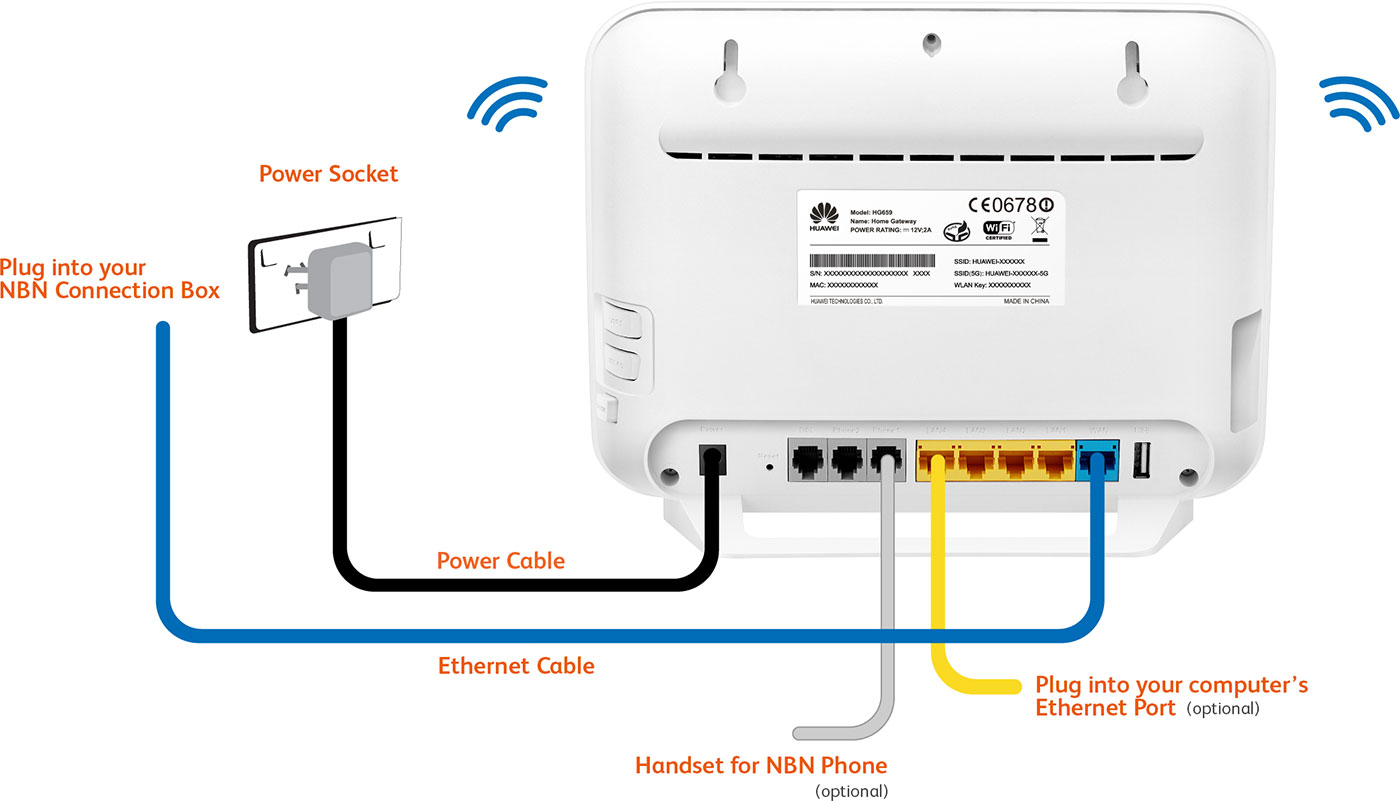 |
| Figure 2: Standard NBN HFC cabling for the HG659 router. |
Setting up NBN HFC for your HG659
Your Huawei HG659 should configure automatically once your NBN service is active, and your modem is powered on for 15 minutes. The following steps only apply if your router does configure automatically.
Check that the Internet light on the front of the router is lit - an unblinking green light. If you've plugged in a phone for the NBN Phone service, check that the VoIP light on the front of the router is also lit.
Step 1
- Make sure that your computer is connected to your router with an Ethernet cable.
- Open your preferred web browser - for example, Internet Explorer, Google Chrome, or Mozilla Firefox.
- Enter the following number into the address bar and then hit Enter on your keyboard:
- 192.168.1.1 (this number is called an IP Address).
 |
| Figure 3: Entering the IP address to access the router |
Step 2
- The modem's Log In page will open and you will be asked for a username and password.
| Username: | admin |
|---|---|
| Password: | admin |
| This is the router's default username and password. We recommend that you change the password for security reasons. |
|
- Click Log in to log into the router.
Step 3
- The router will log in and display a welcome page.
- Click the blue Start Wizard section on the left of the screen to start the setup wizard.
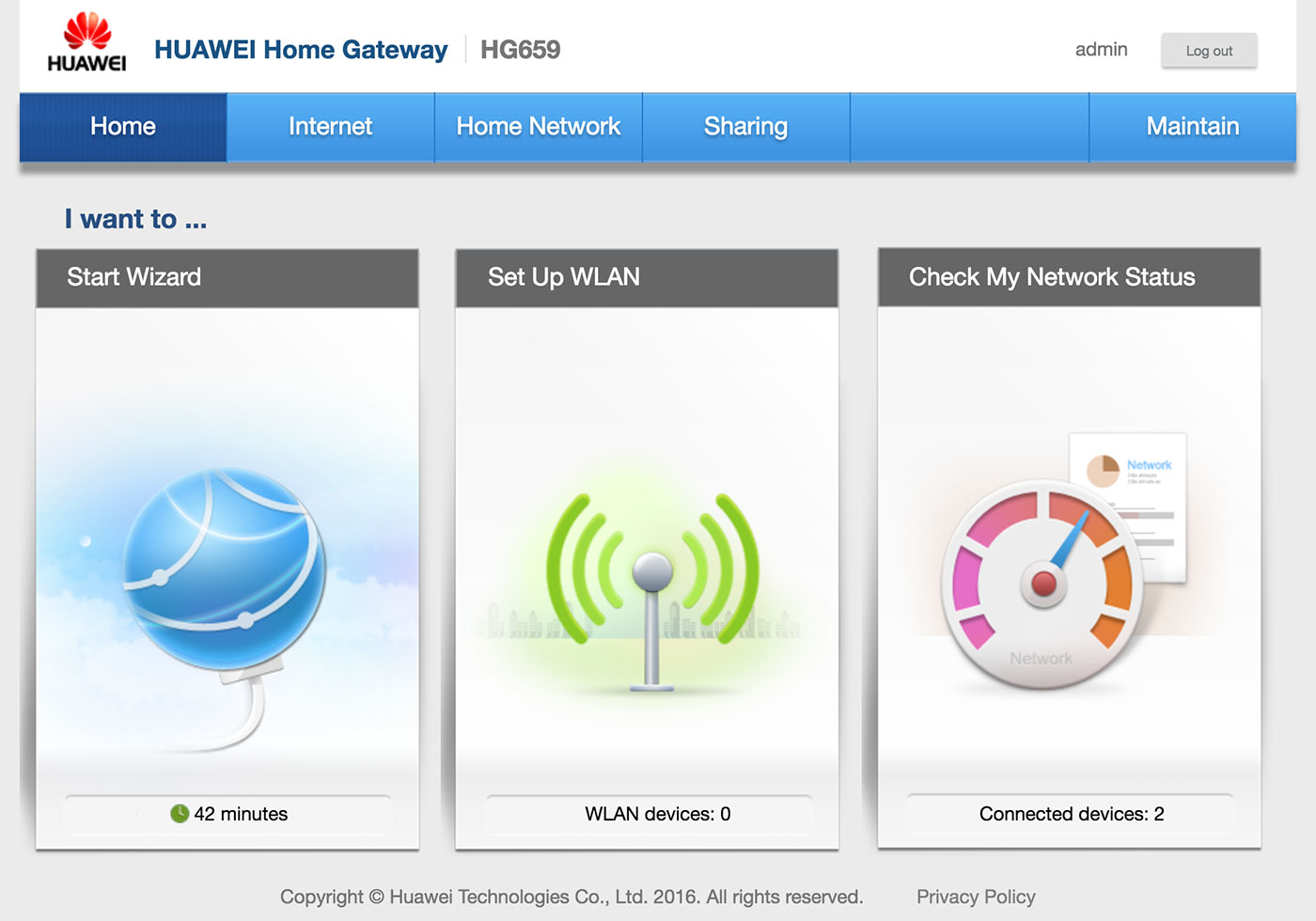 |
| Figure 4: The Huawei HG659 welcome page |
Step 4
- Click Connect with user account to bring up the manual login settings.
- Enter your Internode username into the Internet account field, for example: username@internode.on.net
NOTE: If your username does not include @internode.on.net you will be unable to connect. - Enter your Internode password into the Password field. If you've forgotten your password, you can retrieve it with our Password Retrieval tool.
- Click Save to continue the wizard.
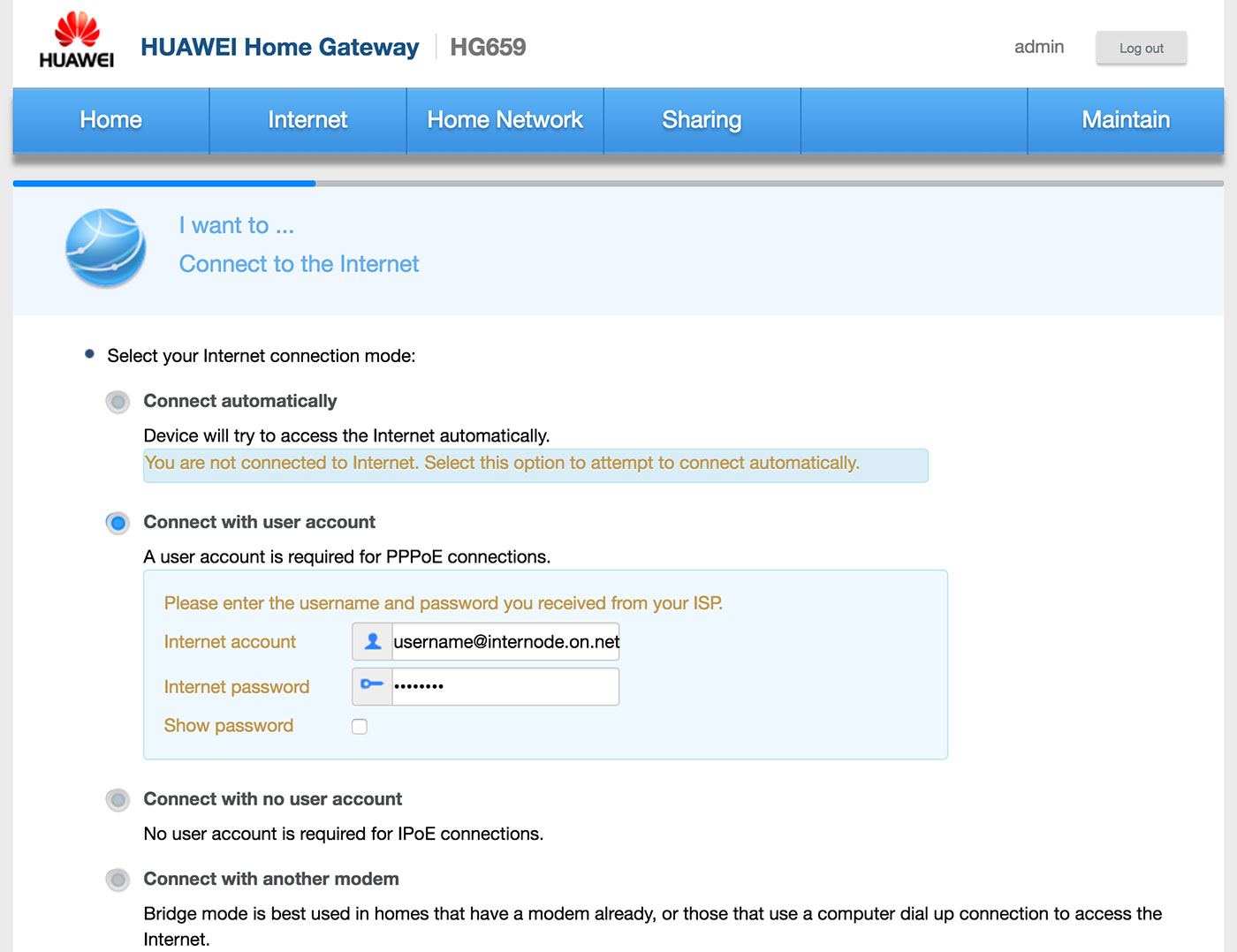 |
| Figure 5: Configuring your NBN HFC broadband service |
Step 5
- The wizard will test the Internet connection.
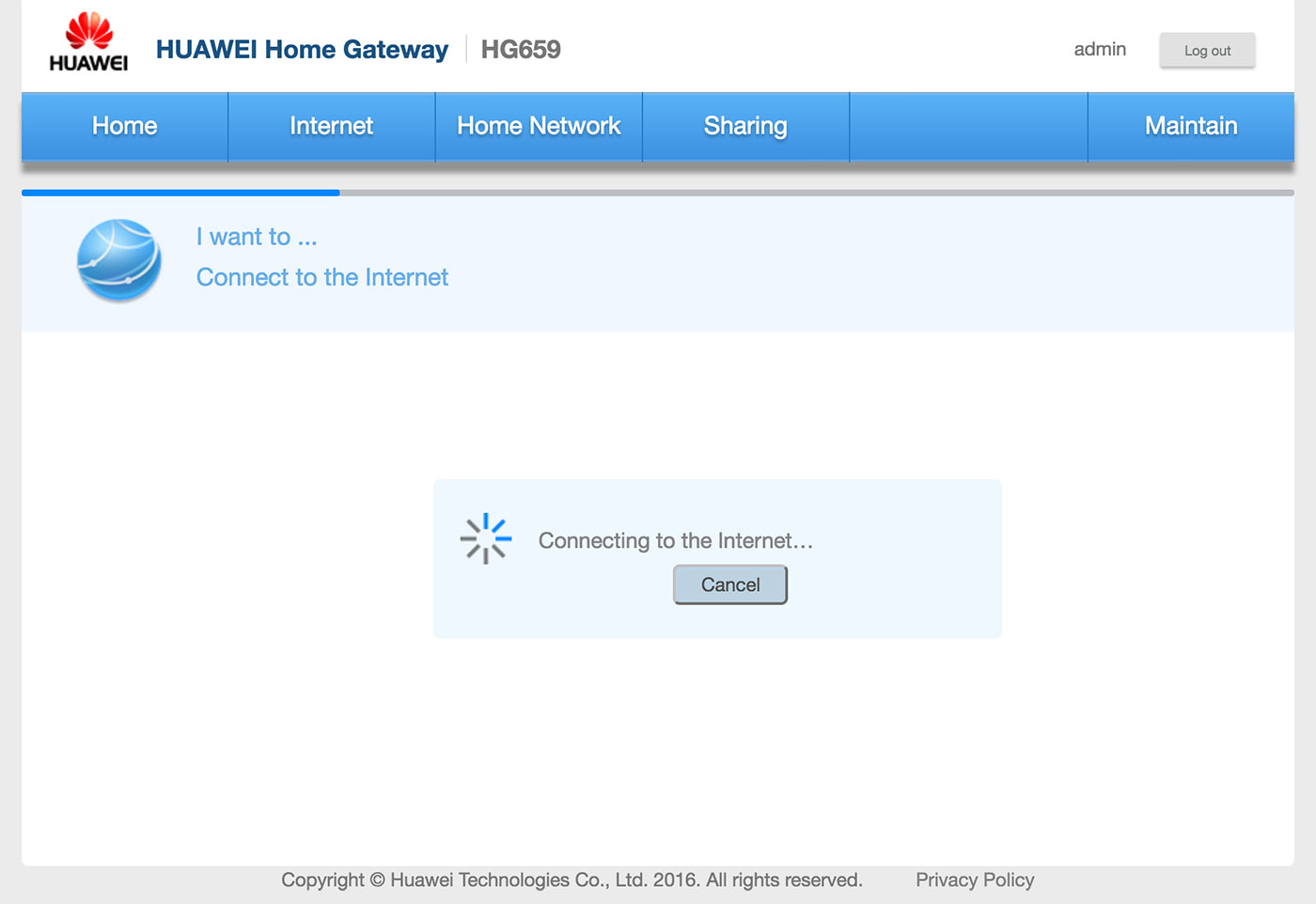 |
| Figure 6: Testing the connection |
- Once the test is successful, it will display Internet connected.
- Click Try WLAN to change your WiFi settings, or Finish to end the wizard.
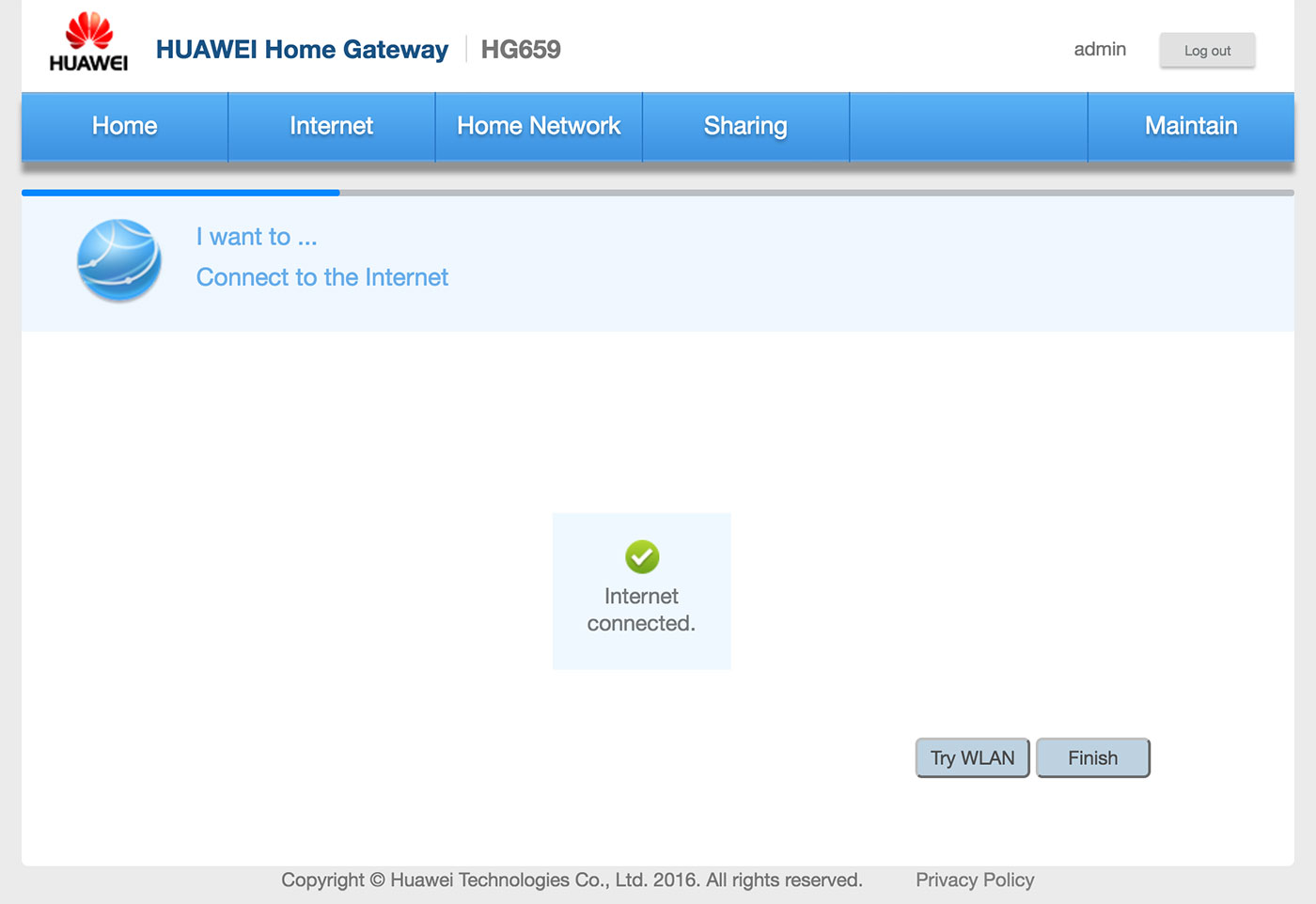 |
| Figure 7: Connection successful |
Step 6
Your router has two default WiFi networks set up - one for 2.4 GHz and one for 5 GHz WiFi. If you would like to use the default settings, you can find the network names and passwords on the back of your router.
To use the default WiFi settings, simply do not change any settings and click Save. Otherwise, follow the instructions listed in this guide.
- If you selected Try WLAN in the last step, the wizard will move on to WiFi setup.
- If you don't want to use the 2.4 GHz WiFi, click the switch next to 2.4 GHz to turn it Off.
- If you do want to use the 2.4 GHz WiFi, make sure the 2.4 GHz switch is turned on, and create a name for your 2.4 GHz wireless network. Enter this name into the WLAN 2.4 GHz SSID field.
- If you don't want to use the 5 GHz WiFi, click the switch next to 5 GHz to turn it Off.
- If you do want to use the 5 GHz WiFi, make sure the 2.4 GHz switch is turned on, and create a name for your 5 GHz wireless network. Enter this name into the WLAN 5 GHz SSID field.
Creating a network name (SSID)
Your network name is used to identify your wireless network. This is particularly useful if there are other wireless networks nearby.
Because your network name will be visible outside of your home or office, the name should be recognisable but should not use any personal or service details.
- Bad Network Names:
BloggsFamily, JoeBloggs, 123JamesStreet, Internode, default, your Internode username, your router's name. - Good Network Names:
MyNetwork, HomeWireless, Homestead, Cookie Monster (be creative!)
- Once you have created a name for your 2.4 GHz and 5 GHz WiFi, you'll need to create a password that will be used to access your wireless networks. Type your password into the Password field.
Creating a Pre-shared Key (Wireless Password)
A Pre-shared key prevents people you don't know from accessing your wireless network. When you connect your computers to your wireless network, you will be asked for the pre-shared key. If someone tries to connect without the pre-shared key, they will be unable to connect.
Your pre-shared key:
- must have a minimum of 8 alphanumeric characters
- is case sensitive
- should never be the same as your Internode password
We recommend you create a complex password for your pre-shared key.
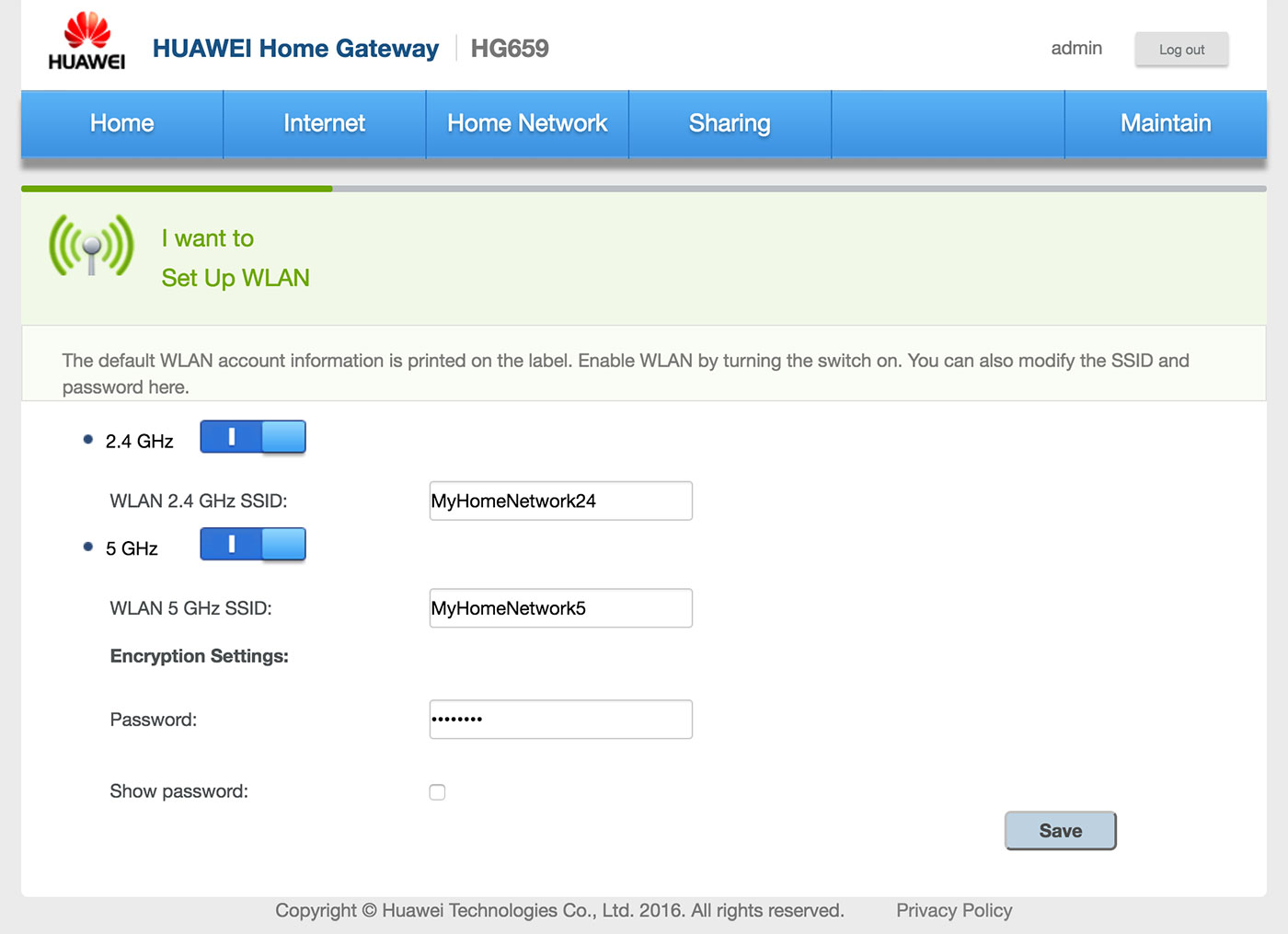 |
| Figure 8: Creating names and passwords for your wireless networks |
- Finally, click Save to save your settings.
- The Huawei HG659 will show a diagram, displaying what is connected to your router. You may simply close the browser window at this point.
Congratulations! You have successfully configured your router to connect to the Internet.
Further Assistance
If you are having trouble setting up your router, or would like to clarify some of the steps, please contact our Support Team.

